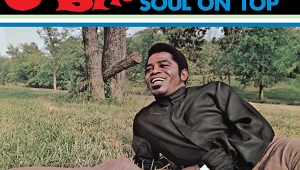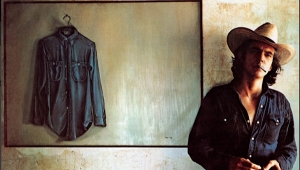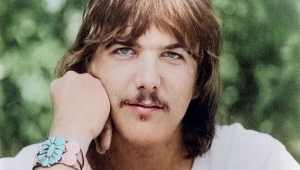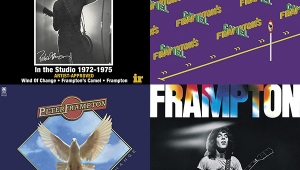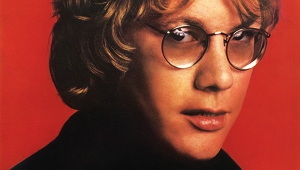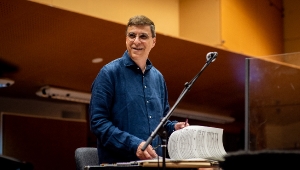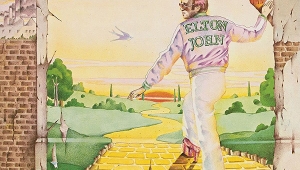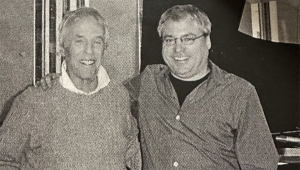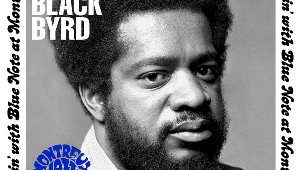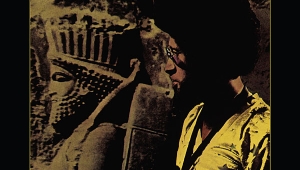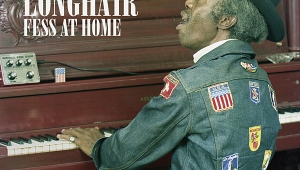| Columns Retired Columns & Blogs |
Nanci Griffith
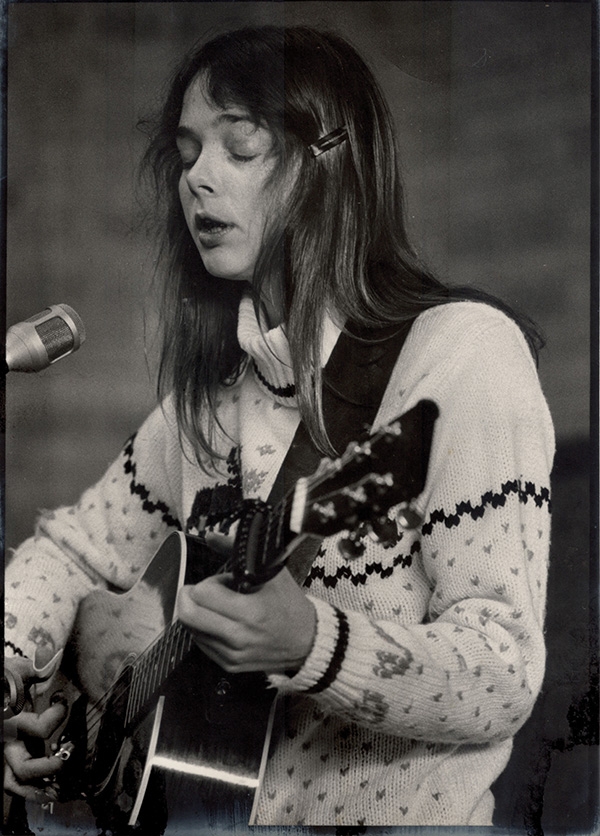
A vital member of the second wave of Texas singer-songwriters that emerged in the 1970s and included Lucinda Williams, Butch Hancock, and Lyle Lovett, Nanci Griffith was a product of a time when, to paraphrase a once-ubiquitous bumper sticker, Austin was still weird. Gifted with a delicate, sweet voice and fierce determination, she started playing out at the age of 12 and getting paid at 14. While never having the ability to project Joan Baez–like volume, she could certainly fill a room. And while her voice could at times take on a flat, almost-nasal resonance, her tight vibrato was strong and evocatory the more you listened.
It took Griffith the songwriter, who also became a powerful live performer, years to hit her stride as a recording artist. Her first albums, 1978's There's a Light Beyond These Woods, released by Austin's B.F. Deal Records, and 1982's Poet in My Window, released on Featherbed Records, were uncommonly strong as early efforts go, but neither elicited much interest nor sold enough to chart. They did, however, pique the interest of Philo Records, which released her second pair of albums in the mid-1980s. Griffith had to wait until the early 1990s, on Elektra Records, to find widespread success, when the all-covers album Other Voices, Other Rooms won a 1994 Grammy for Best Contemporary Folk Album.
Her untimely death on August 13, 2021, spurred the recent release of Working in Corners, a reissue on Craft/Concord Records of her first four albums (1978–1986). Freshly remastered, with lacquers cut by Jeff Powell and pressed on 180gm vinyl at Memphis Record Pressing, the collection is housed in a cloth-covered box and supplemented with an excellent illustrated booklet. A new tribute album on Rounder/Concord, More Than a Whisper: Celebrating the Music of Nanci Griffith, collects performances of her work by 14 different artists. Both releases are also available digitally and on CD.
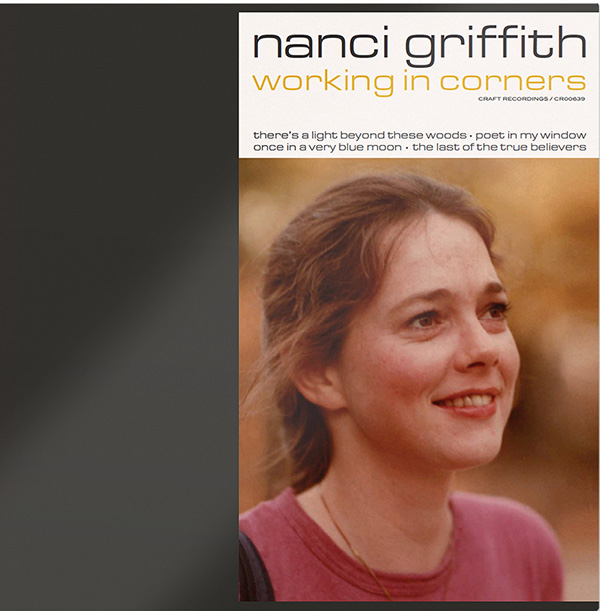
The early albums are a fascinating window into Griffith, always caught between genres, and her evolution from folk to country to one of Americana music's founders. Strong but not overwhelming, her debut is best known for the title cut addressed to childhood friend Mary Margaret. B.F. Deal Records owner Mike Williams says in the booklet that there are "60 to 80 edits" on her first recording, which was recorded direct to two-track and mixed on the fly, but all are well-blended and inaudible. Recorded at Loma Ranch Studios in Fredericksburg, Texas, Poet in My Window, which is dedicated to the memory of Carson McCullers, Marilyn Monroe, and Thomas Wolfe, among others—"lonely hunters all"—continued the learning process.
Griffith's career as a recording artist stepped up a notch with 1984's Once in a Very Blue Moon. Named for the memorable title track written by Patrick Alger and Eugene Levine, it features cover art of Griffith parked alone at a diner's corner table, a copy of Eudora Welty's Delta Wedding under her hand as she longs for her date whose beer, cigarettes, and motorcycle helmet sit across from her. The image refers to Griffith's high-school boyfriend, who died in a motorcycle accident, an event that affected her deeply. Blue Moon was recorded with a band that included pedal-steel player Lloyd Green, bassist Roy Huskey Jr., a very young Bela Fleck on banjo, and background vocalist Lyle Lovett, who would become a lifelong friend and ally.
While her lyrics are always dense and overly wordy—she was a master at rapid-fire packing of words into lines—here more artistry emerges. Her vocal delivery begins to cultivate the beauty in both words and melody. The title track has both, and by choosing it as the album's title, she signals how important these qualities had become to her and an awareness that catchy tunes sell albums. Much to her credit, Griffith was never too proud or insecure to cover a stirring song that spoke to her but was written by someone else.
All her talents and experience came together on The Last of the True Believers, essential if only for three songs. The title track hinges on its emphatic chorus refrain: "Last of the True Believers/You pack your things and go back home/You could go home again, home again, home." Her cover of Tom Russell's irresistibly melodic "St. Olav's Gate" rings true. And then there is the swaying, sentimental "Love at the Five and Dime," the story of Eddie and Rita, two young lovers who met at the Woolworth counter, presumably like the one in the cover-art image featuring Lyle Lovett waltzing in one corner. Its lyrics, set to one of Griffith's most poignant melodies, repeat themselves to great effect: "They'd sing/Dance a little closer to me, dance a little closer now/Dance a little closer tonight/Dance a little closer to me, 'cause it's closing time/& love's on sale tonight at this five and dime." The strength of this album led to a deal with MCA Nashville and the follow-up Lone Star State of Mind, her strongest-ever collection of originals.
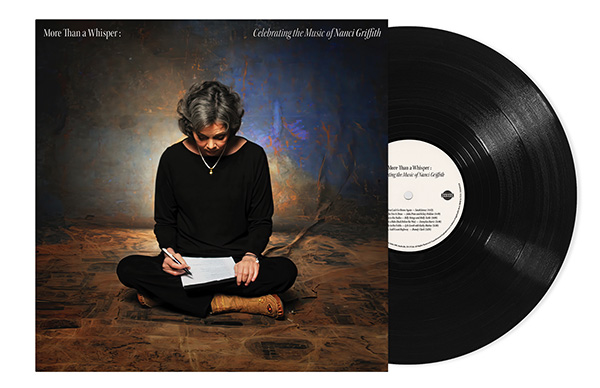
Filled with interpretations by other artists, tribute albums inevitably have an up-and-down quality as some artists try harder and have more to say than others. If there's a revelation to be gleaned from More Than a Whisper, it's the strength of Griffith's incisive and clever lyrics. Her carefully chosen words ring out in Steve Earle's "It's a Hard Life Wherever You Go" and longtime Griffith friend and supporter Lyle Lovett's rendition of what may be her best song of all, "Trouble in the Fields." Nothing against any of the artists who contributed, but their versions make clear what a great singer of her own songs and interpreter Griffith truly was. Gone too soon, her music lives on, providing much-needed inspiration in an era when songwriting of this caliber is fast becoming a lost art.
- Log in or register to post comments
